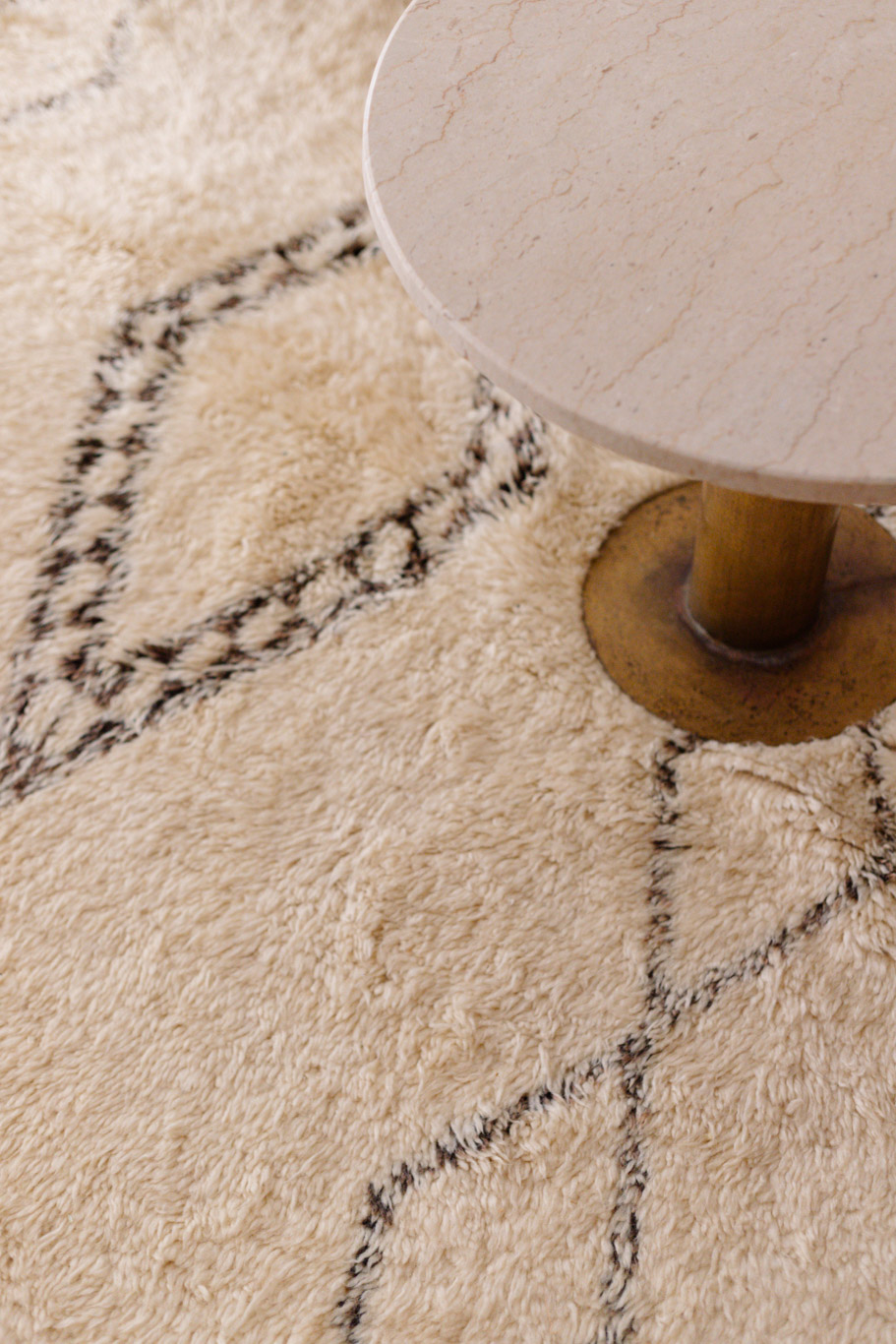Moroccan carpets and rugs are more than floor coverings—they’re masterpieces of art, history, and culture. Handwoven by Berber tribes for generations, these rugs capture the essence of Moroccan heritage. From bold geometric patterns to soft, natural hues, every rug tells a story, making it a coveted addition to homes around the globe.
This guide will unravel the allure of Moroccan rugs, from their ancient origins to their modern appeal. Whether you’re an interior design enthusiast or a cultural history buff, there’s something magical about owning a piece of Morocco.
The Origins of Moroccan Carpets and Rugs

The story of Moroccan rugs begins with the Berber tribes who wove these textiles to protect themselves against the harsh climates of the Atlas Mountains. Using locally sourced wool and natural dyes, they created rugs that were practical yet stunning.
Historically, these rugs also held cultural and spiritual significance. Specific patterns symbolized protection, fertility, or storytelling. Learn more about their rich heritage in this history of Moroccan carpets.
Types of Moroccan Rugs
1. Beni Ourain Rugs
Renowned for their minimalist designs, Beni Ourain rugs feature neutral tones and soft textures. Made from sheep’s wool, these rugs are ideal for modern interiors.
2. Azilal Rugs
Azilal rugs are known for their vibrant colors and playful patterns. They are crafted using wool and cotton blends, offering a cheerful aesthetic.
3. Boucherouite Rugs
Eco-conscious buyers adore Boucherouite rugs. These pieces use recycled fabric strips, combining sustainability with creativity.
4. Kilim Rugs
Unlike their plush counterparts, Kilim rugs are flatwoven and lightweight. Their intricate patterns make them versatile for wall hangings or floor use.
Explore these diverse styles in detail at this resource on types of Moroccan rugs
The Symbolism Behind Moroccan Rugs

One of the unique features of Moroccan carpets is their deep symbolic meanings. Patterns and motifs reflect the weaver’s personal experiences, tribal identity, or aspirations. Common symbols include:
- Triangles and diamonds: Representing protection and fertility.
- Zigzag lines: Symbolizing water and continuity.
- Colors: Each color has a meaning; red signifies strength, blue symbolizes peace, and yellow denotes prosperity.
Weaving Techniques and Natural Materials
The art of weaving Moroccan rugs requires exceptional skill. Artisans use a Berber knot, a distinctive technique ensuring durability. Wool remains the primary material, often dyed with natural pigments sourced from plants, minerals, and spices.
These methods not only ensure longevity but also promote eco-friendliness, as many artisans adhere to sustainable practices.
Regional Styles and Variations
Middle Atlas Mountains
Rugs from this region feature thick piles and simple geometric designs, perfect for cold climates.
High Atlas Mountains
Known for vivid colors and detailed motifs, these rugs exhibit the creativity of their weavers.
Anti-Atlas Regions
Flatwoven Kilim rugs dominate this area, characterized by earthy tones and lightweight designs.
Women Weavers: The Backbone of Moroccan Carpets
The creation of Moroccan rugs is a craft deeply tied to women. For centuries, Berber women have used weaving as a means of artistic expression and economic support. Modern-day female artisans continue this tradition, blending traditional techniques with contemporary designs.
Why Moroccan Rugs Are a Must-Have for Interior Design

Timeless Appeal
The minimalist elegance of Moroccan rugs makes them suitable for various styles, from bohemian to Scandinavian interiors.
Versatile Uses
These rugs work as floor coverings, wall hangings, or even table décor.
Texture and Warmth
The soft textures of wool and intricate designs add warmth and sophistication to any space.
Tips for Buying Authentic Moroccan Rugs
To ensure you’re purchasing a genuine Moroccan rug:
- Check for irregularities: Handwoven rugs have imperfections that add to their charm.
- Examine the materials: Look for natural wool or cotton, avoiding synthetic fibers.
- Buy from reputable sellers: Trusted sources like Musmus Rugs guarantee authenticity.
Caring for Your Moroccan Rug
To maintain the beauty and longevity of your Moroccan carpet:
- Vacuum regularly to prevent dust build-up.
- Rotate the rug to avoid uneven wear.
- Address stains promptly with mild soap and water.
- Seek professional cleaning annually for deeper maintenance.
Contemporary Trends in Moroccan Rugs
In recent years, Moroccan carpets have evolved to meet global design trends. While traditional designs remain popular, modern variations featuring abstract patterns and pastel hues are gaining traction.
Sustainability and Ethical Practices
Modern artisans are focusing on sustainability by:
- Using natural dyes and materials.
- Promoting fair trade practices to ensure fair wages for weavers.
- Creating rugs from recycled materials, like Boucherouite rugs.
FAQs About Moroccan Carpets and Rugs
What makes Moroccan rugs unique?
Their handwoven designs, natural materials, and symbolic patterns set them apart.
How can I tell if a Moroccan rug is authentic?
Look for irregular patterns, natural wool, and vibrant dyes.
What materials are used in Moroccan carpets?
Mostly wool, cotton, and natural dyes.
Can Moroccan rugs be used in modern interiors?
Absolutely! Their versatility makes them ideal for various design styles.
Where can I find authentic Moroccan rugs?
Explore a trusted source like Musmus Rugs.
Conclusion
Moroccan carpets and rugs are more than functional decor—they are heirlooms of history, craftsmanship, and culture. Whether you admire their artistry or their sustainable ethos, owning a Moroccan rug is an investment in timeless beauty and tradition.






 No products in the cart.
No products in the cart.